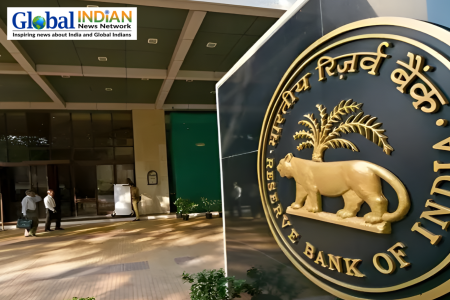 According to a report by foreign brokerage Morgan Stanley, India’s significance as a catalyst for global economic growth is on the rise. The report predicts that India’s contribution to world growth will increase from 10% in 2021 to 15% in 2022, and further to 17% from 2023 to 2028. Notably, the report anticipates a substantial acceleration in India’s nominal GDP growth, projecting a rate of 12.4% year-on-year in fiscal year 2025, surpassing China, the United States, and the Euro Area. This robust growth trajectory is expected to drive India’s nominal GDP to reach $5 trillion by 2027, positioning India as the world’s third-largest economy.
According to a report by foreign brokerage Morgan Stanley, India’s significance as a catalyst for global economic growth is on the rise. The report predicts that India’s contribution to world growth will increase from 10% in 2021 to 15% in 2022, and further to 17% from 2023 to 2028. Notably, the report anticipates a substantial acceleration in India’s nominal GDP growth, projecting a rate of 12.4% year-on-year in fiscal year 2025, surpassing China, the United States, and the Euro Area. This robust growth trajectory is expected to drive India’s nominal GDP to reach $5 trillion by 2027, positioning India as the world’s third-largest economy.
The report envisions a positive economic cycle unfolding in India, with sustained growth rates of 6.4% year-on-year in fiscal year 2024 and 6.5% year-on-year in fiscal year 2025, averaging 6.6% year-on-year from fiscal year 2024 to 2028. Morgan Stanley has been expressing a constructive outlook on India for some time, emphasizing the nation’s unique potential for domestic demand growth in the Asian market. The report acknowledges India’s strong economic data and the favorable performance of risk assets. However, it raises questions about the sustainability of this growth trajectory and potential risk factors.
The key driver for sustaining growth and asset market performance, according to the report, is the investment cycle. It notes that India has already seen signs of an upturn in public capital expenditure, and there are indications that private capital expenditure is also on the rise. The report attributes this shift in the investment climate to policy changes since 2019, which emphasized supply-side reforms, increased public capital expenditure, reduced corporate taxes, and the introduction of the PLI (Production-Linked Incentive) scheme. These measures have attracted investments and unlocked India’s structural growth story.
While some investors have been monitoring Foreign Direct Investment (FDI) data for evidence of India’s benefit from supply chain diversification, the report acknowledges that FDI inflows into India have declined due to a softening global GDP and trade growth. Specific factors, such as reduced funding in the Internet and related sectors from a venture capital and private equity perspective, have contributed to these declines. However, India’s share of global FDI flows has increased since 2017, from 2.4% in the fourth quarter of 2017 to 4.2% in the first quarter of 2023.
Additionally, there are implementation lags in some cases, where investment commitments have been announced but the actual inflow of investment is yet to materialize. For instance, India is still awaiting the full realization of electronic manufacturing investments, including announcements from companies like Foxconn and Intel regarding collaborations for laptop manufacturing in India.













